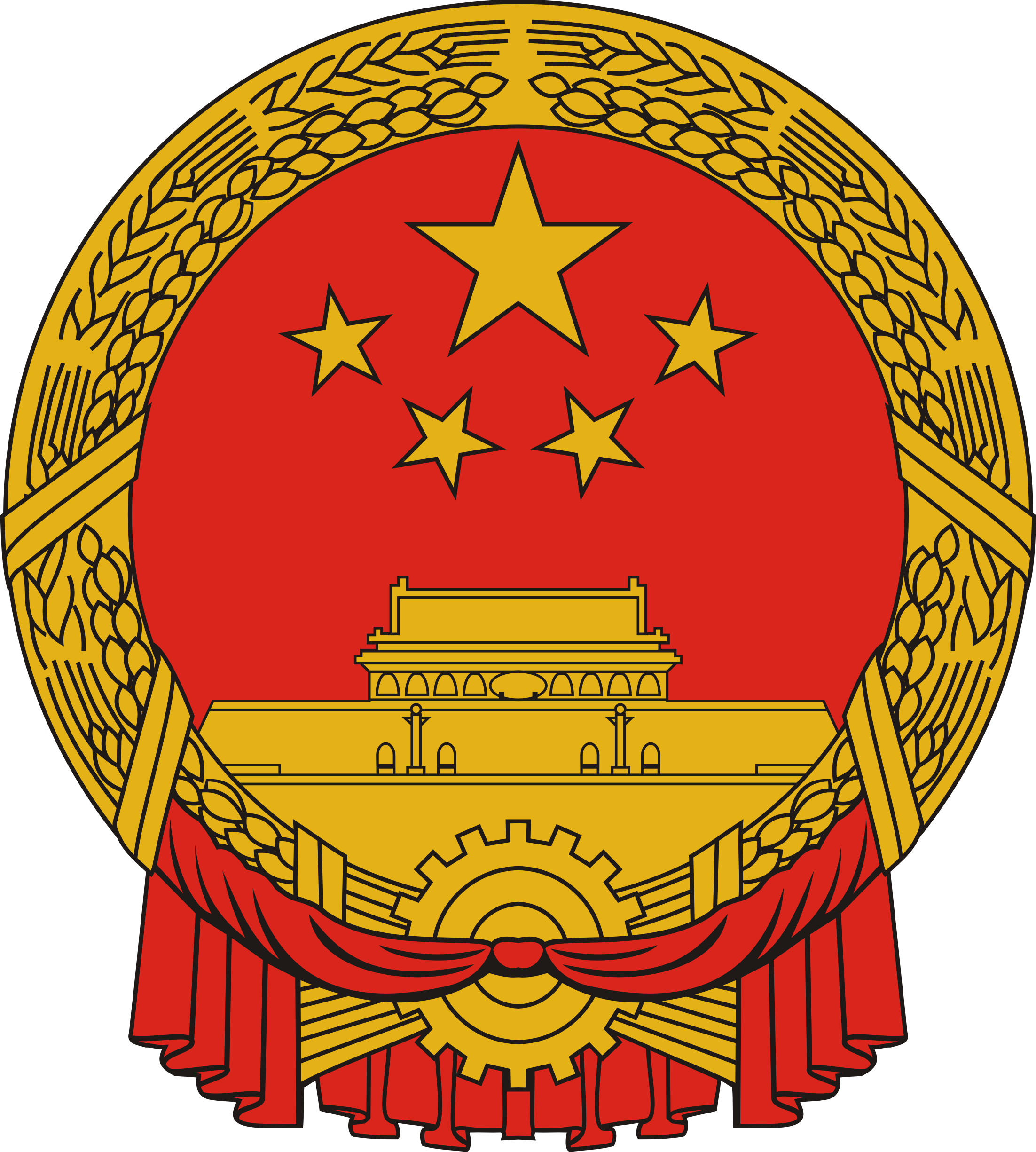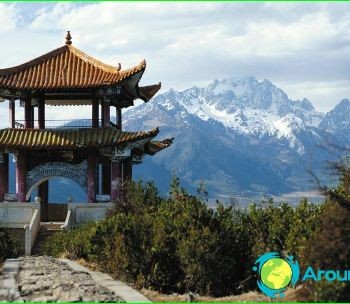Coat of arms of China

A great and mighty power did not have a need for uniform state symbols. Therefore, the modern coat of arms of China dates back to 1950. Although the previous state formations also had their emblems, for example, the Chinese Empire (1915-1916), the Republic of China, which managed to radically change the symbol over the years of its existence. Both the first and the second state used the same image, and in the republic it officially operated until 1928, and then a fundamentally different form of the coat of arms was approved.
Excursion into Chinese history
The twentieth century in China is marked by the appearance of a new state symbol; there is even an official date for its creation - August 28, 1912. The general principles of the image are close to European traditions, when each color, shade and element has its own symbolic meaning..
It is perfectly understandable why such beautiful and complex patterns appeared on the Chinese coat of arms - they coincided with the designs that adorned the emperor's clothes. The artistic image, created in August 1912, the next year, 1913, took pride of place as the main symbol of the state.
In addition to the traditional oriental patterns that adorned the shield and the space around it, the coat of arms featured stylized drawings of a peacock and a dragon, which played an essential role in Chinese mythology and folklore..
White sun of china
In 1928, the official authorities of the country and the Kuomintang party decided to radically change the image of the state emblem of the Republic of China. Instead of complex patterns reminiscent of emperors, and sacred mythological animals, a different emblem appeared.
This radically new symbol of the state, on the one hand, was primitively simple, both in form and in color. On the other hand, behind this seeming simplicity was an interpretation filled with deep meaning. The coat of arms was a white sun on a blue background. It is symbolic that the heavenly body had twelve rays, which represented 12 months of the year and twelve hours (each Chinese hour was equal to two European).
Eternal symbols
In 1950, there was again a sharp turn in the general line of development of China, in connection with which another coat of arms was born, again radically different from the previous ones. The modern state symbol of the country depicts the Gate of Heavenly Peace. They represent a fragment of a real architectural complex, a monument of ancient Chinese history..
This symbol of ancient traditions is depicted against the background of a red circle framed by ears of wheat and rice, the main crops in China. The cogwheel located in the lower part of the frame reminds of the rapid development of industry. Five stars are symbols depicted both on the coat of arms and on the flag of the Celestial Empire.


